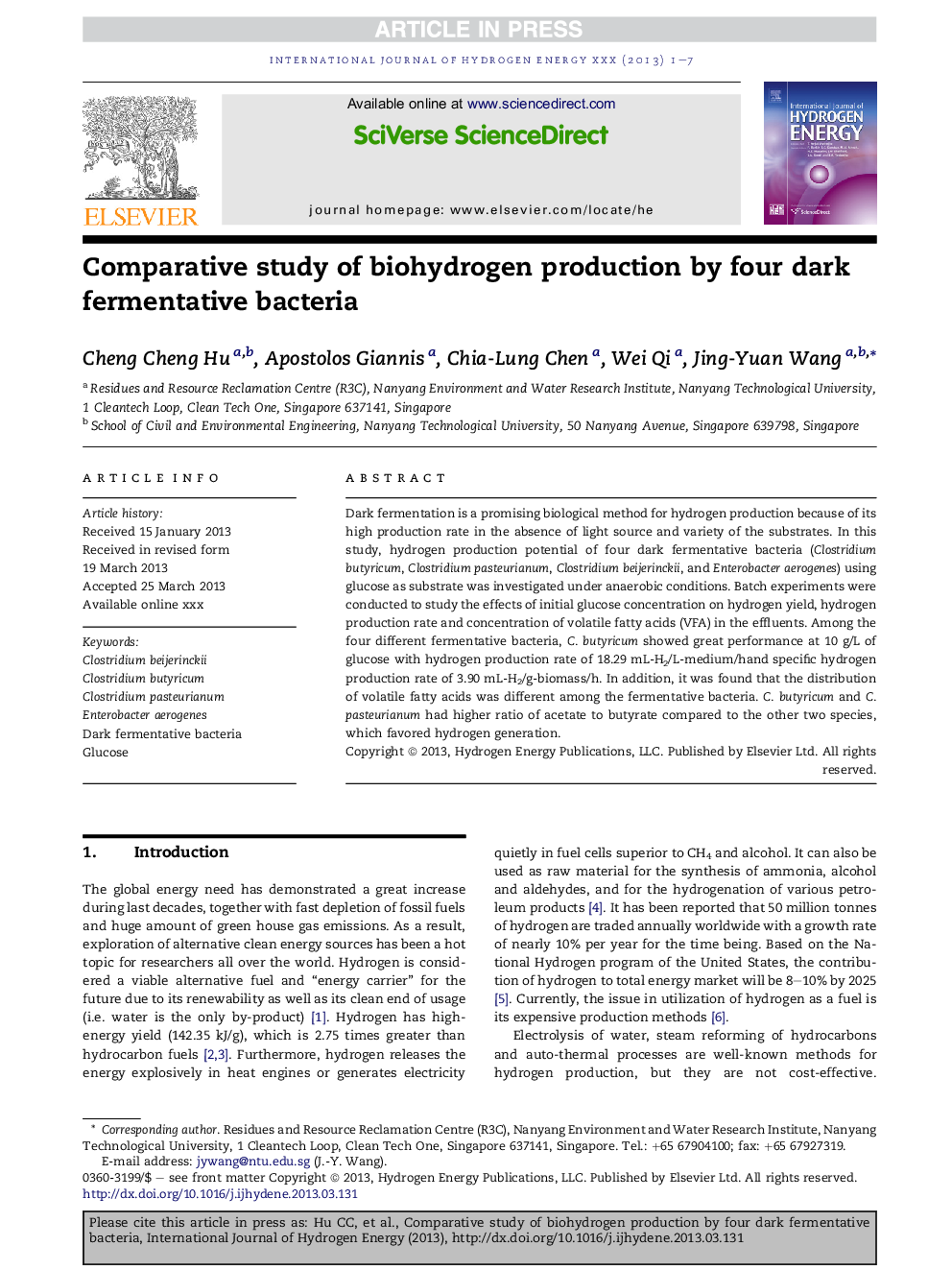| Article ID | Journal | Published Year | Pages | File Type |
|---|---|---|---|---|
| 7721614 | International Journal of Hydrogen Energy | 2013 | 7 Pages |
Abstract
Dark fermentation is a promising biological method for hydrogen production because of its high production rate in the absence of light source and variety of the substrates. In this study, hydrogen production potential of four dark fermentative bacteria (Clostridium butyricum, Clostridium pasteurianum, Clostridium beijerinckii, and Enterobacter aerogenes) using glucose as substrate was investigated under anaerobic conditions. Batch experiments were conducted to study the effects of initial glucose concentration on hydrogen yield, hydrogen production rate and concentration of volatile fatty acids (VFA) in the effluents. Among the four different fermentative bacteria, C. butyricum showed great performance at 10Â g/L of glucose with hydrogen production rate of 18.29Â mL-H2/L-medium/hand specific hydrogen production rate of 3.90 mL-H2/g-biomass/h. In addition, it was found that the distribution of volatile fatty acids was different among the fermentative bacteria. C. butyricum and C. pasteurianum had higher ratio of acetate to butyrate compared to the other two species, which favored hydrogen generation.
Keywords
Related Topics
Physical Sciences and Engineering
Chemistry
Electrochemistry
Authors
Cheng Cheng Hu, Apostolos Giannis, Chia-Lung Chen, Wei Qi, Jing-Yuan Wang,
